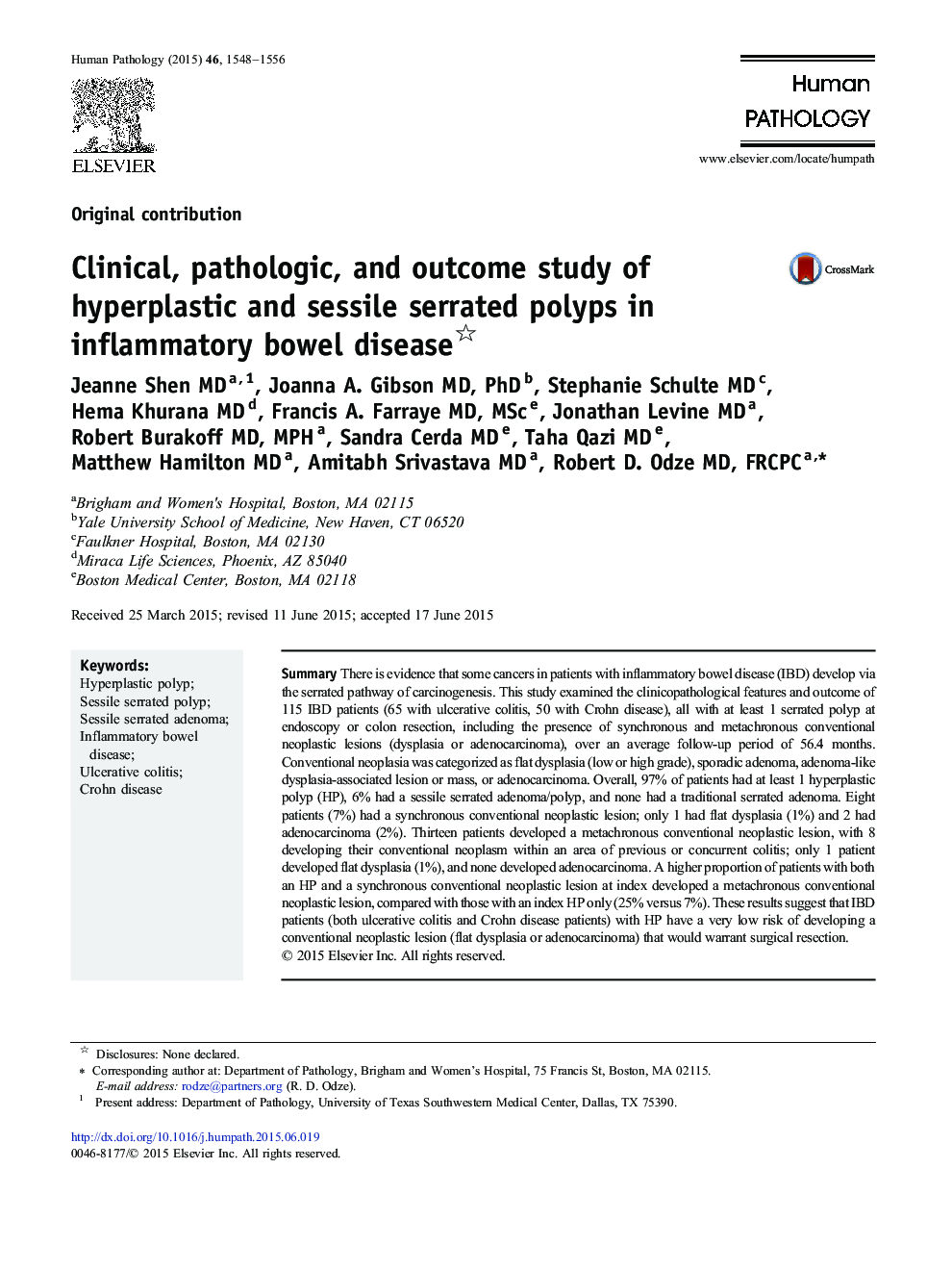| Article ID | Journal | Published Year | Pages | File Type |
|---|---|---|---|---|
| 4132622 | Human Pathology | 2015 | 9 Pages |
SummaryThere is evidence that some cancers in patients with inflammatory bowel disease (IBD) develop via the serrated pathway of carcinogenesis. This study examined the clinicopathological features and outcome of 115 IBD patients (65 with ulcerative colitis, 50 with Crohn disease), all with at least 1 serrated polyp at endoscopy or colon resection, including the presence of synchronous and metachronous conventional neoplastic lesions (dysplasia or adenocarcinoma), over an average follow-up period of 56.4 months. Conventional neoplasia was categorized as flat dysplasia (low or high grade), sporadic adenoma, adenoma-like dysplasia-associated lesion or mass, or adenocarcinoma. Overall, 97% of patients had at least 1 hyperplastic polyp (HP), 6% had a sessile serrated adenoma/polyp, and none had a traditional serrated adenoma. Eight patients (7%) had a synchronous conventional neoplastic lesion; only 1 had flat dysplasia (1%) and 2 had adenocarcinoma (2%). Thirteen patients developed a metachronous conventional neoplastic lesion, with 8 developing their conventional neoplasm within an area of previous or concurrent colitis; only 1 patient developed flat dysplasia (1%), and none developed adenocarcinoma. A higher proportion of patients with both an HP and a synchronous conventional neoplastic lesion at index developed a metachronous conventional neoplastic lesion, compared with those with an index HP only (25% versus 7%). These results suggest that IBD patients (both ulcerative colitis and Crohn disease patients) with HP have a very low risk of developing a conventional neoplastic lesion (flat dysplasia or adenocarcinoma) that would warrant surgical resection.
